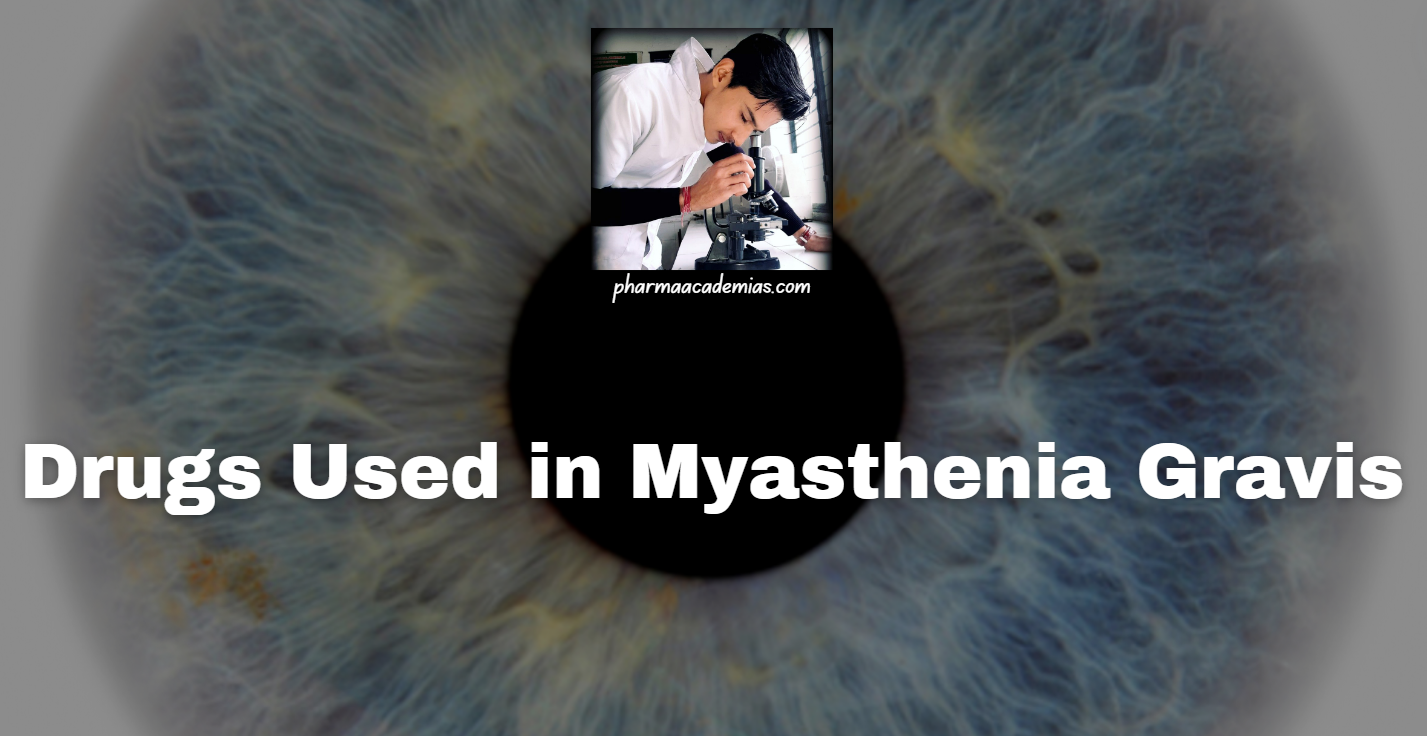Myasthenia gravis (MG) is an autoimmune neuromuscular disorder characterized by muscle weakness and fatigue, typically resulting from antibodies targeting the acetylcholine receptors (AChR) at the neuromuscular junction. Treatment of MG primarily involves the use of medications aimed at improving neuromuscular transmission and reducing symptoms. Here’s a detailed note covering the definition, classification, pharmacological actions, dosage, indications, and contraindications of drugs commonly used in myasthenia gravis:
Definition:
Drugs used in myasthenia gravis are pharmacological agents employed to alleviate symptoms and improve neuromuscular transmission in individuals affected by the condition. These drugs target various mechanisms involved in the pathophysiology of MG to enhance muscle strength and reduce weakness.
Classification:
Drugs used in myasthenia gravis can be classified into several categories based on their mechanism of action:
a. Acetylcholinesterase Inhibitors:
These drugs inhibit the enzyme acetylcholinesterase, which breaks down acetylcholine (ACh) at the neuromuscular junction, thereby increasing the availability of ACh for binding to receptors and enhancing neuromuscular transmission.
Examples include:
– Pyridostigmine
– Neostigmine
– Edrophonium
b. Immunosuppressants:
Immunosuppressive agents are used to modulate the immune response and reduce the production of antibodies targeting AChR.
Examples include:
– Prednisone
– Azathioprine
– Mycophenolate mofetil
– Cyclosporine
– Tacrolimus
c. Immunomodulatory Therapies:
– These drugs target specific immune cells or pathways involved in the pathogenesis of MG.
Examples include:
– Rituximab (monoclonal antibody targeting B cells)
– Intravenous immunoglobulin (IVIg)
– Plasma exchange (plasmapheresis)
Pharmacological Actions:
Acetylcholinesterase Inhibitors: Increase the concentration of acetylcholine at the neuromuscular junction, enhancing muscle contraction.
Immunosuppressants: Suppress the production of autoantibodies against AChR and modulate the inflammatory response.
Immunomodulatory Therapies: Target specific components of the immune system involved in the autoimmune response against AChR.
Indications:
Symptomatic Treatment: Drugs used in MG are indicated for the symptomatic management of muscle weakness, fatigue, and other associated symptoms.
Maintenance Therapy: Long-term immunosuppressive or immunomodulatory therapy may be indicated to stabilize the disease, reduce the frequency and severity of exacerbations, and minimize the need for symptomatic treatment.
Prevention of Myasthenic Crisis: Some medications are used to prevent myasthenic crises and severe exacerbations of symptoms that can lead to respiratory failure and require hospitalization.
Contraindications:
– Contraindications vary depending on the specific drug used and individual patient factors.
– In general, contraindications may include hypersensitivity reactions to the medication, pre-existing medical conditions that may be exacerbated by the drug, and drug interactions.
– Close monitoring and individualized assessment are essential to determine the appropriateness of treatment and minimize potential risks.
In summary, drugs used in myasthenia gravis encompass a variety of pharmacological agents aimed at improving neuromuscular transmission, modulating the immune response, and reducing symptoms associated with the condition. Understanding their classification, pharmacological actions, dosage, indications, and contraindications is crucial for the effective management of myasthenia gravis and the optimization of patient outcomes.

